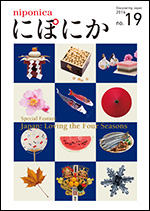niponica is a web magazine that introduces modern Japan to people all over the world.
2016 No.19
Japan: Loving the Four Seasons

Advanced Energy-Efficient Home Dressed for the Season
—LCCM house incorporates the insights of traditional Japanese architecture—
Dressing for the Season
Moving interior elements can modify the living environment to match the seasons.
LCCM Demonstration House comprises a number of features that utilize traditional Japanese architectural insights.
 Layers of Clothing
Layers of Clothing
Wood louver window treatments in layers have their own purpose.
In winter, shoji window treatments are opened by day to draw in gentle sunlight and allow engawa black tiles to store heat. At night, heat insulation panel is lowered to trap warm air. In summer, the wood louver window treatments are closed to block out harsh sunlight.
Screens of material that softens incoming light and thin wood louvers are features inspired by the Japanese aesthetics of latticework and shoji sliding doors.
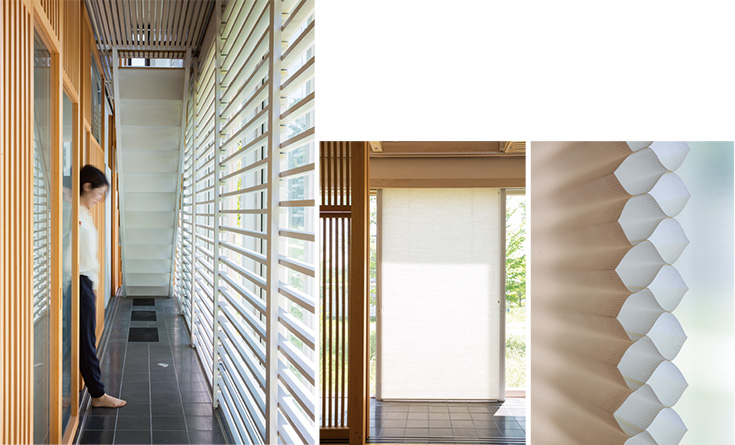
(Left) There are several screening elements on both sides of the engawa: window side has heat insulation screens and movable wood louvers; between engawa and living room is a lattice glass door. (Right) Heat insulation screen is made from two honeycomb layers that prevent heat from escaping. (Photos: Kusu Seiko)
 Partitioned Living
Partitioned Living
The living space in traditional Japanese homes can be divided by opening and closing shoji sliding doors and fusuma. In this house, too, movable partitions make efficient and varied use of space.
Dividing the space this way also saves energy. When room partitions are closed, the space becomes smaller and requires less energy for heating or cooling. Partition between engawa and living room is designed to be closed in summer so that hot air from engawa doesn’t enter the living space and opened in winter to draw engawa warmth into the living space.
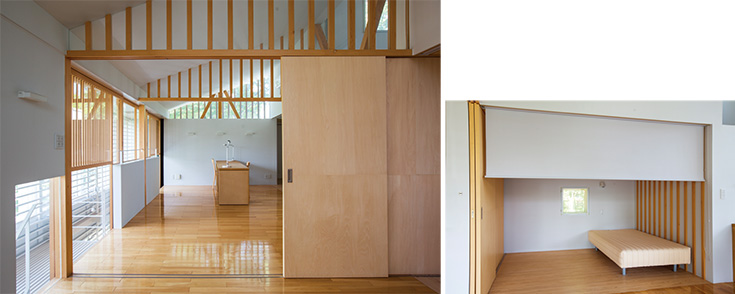
(Left) This continuous space can be partitioned with sliding doors. (Right) When screen in the second-floor bedroom is lowered, it shifts the relaxed space to sleep mode. (Photos: Kusu Seiko)
● Modes for Season and Function (Drawing: Koizumi Atelier)
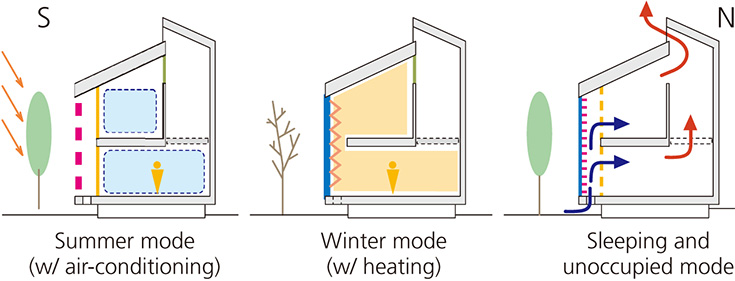
 Creating Air Flow
Creating Air Flow
In spring and autumn, a pleasant breeze is actively brought into the house.
East and west windows can be opened at angles that allow spring and autumn breezes to enter easily. When engawa floor tiles are exchanged with a replaceable lattice, the surface becomes a vent for cooling breezes.
Air drawn in from outside blows through the house and exits via ventilation tower shaped to draw breezes. The whole house may be seen as a device for effective airflow.
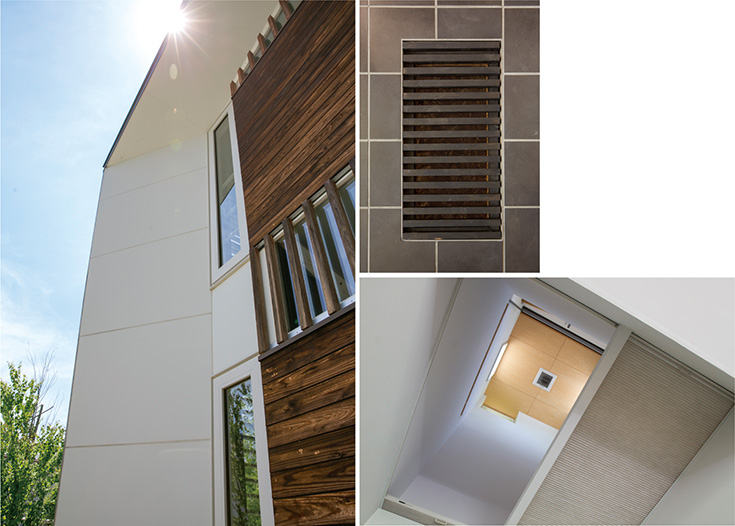
(Left) Windows on either end of the engawa act as vents for east and west breezes. Wall angle draws in more air. (Top right) Engawa floor is made with a removable lattice so breezes enter from below. (Bottom right) Ventilation tower seen from hallway. Manually operated screens can be closed to trap warm air. (Photos: Kusu Seiko)
LCCM Demonstration House / Design concepts
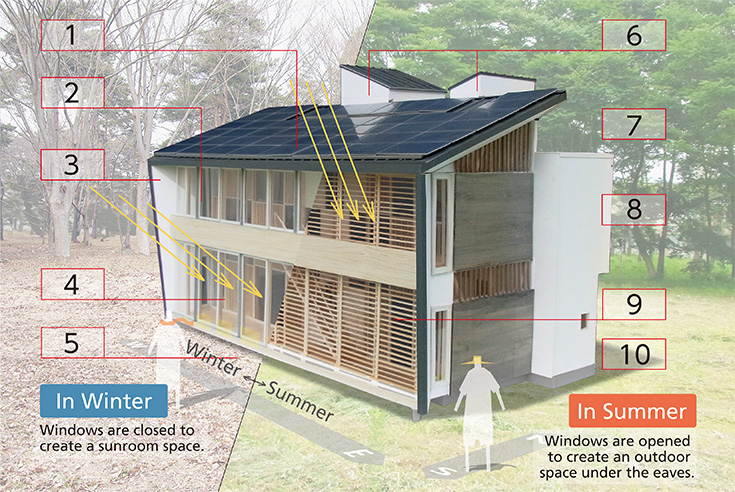
Artist rendering: Koizumi Atelier
- Solar power generation panels
· Solar water heater panels - Large opening toward the south for direct gain of solar heat in winter
- Parabolic walls let in light and fresh air
- Use of domestically grown wood
- Use of blast furnace cement
- Ventilation towers for producing air current
- Dispersed layout of LED lights
- Intermittent operation of highly efficient heat-pump-type air conditioners
- Wood louver boards for shielding solar radiation
- Highly efficient water heater, fuel cells, etc.

